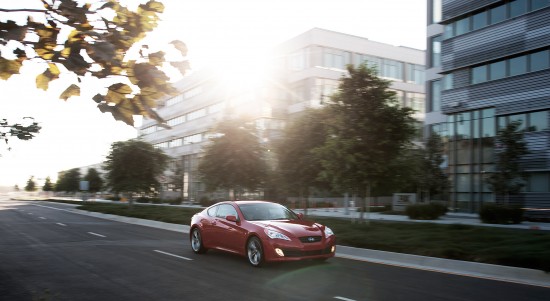This is probably the best sports car from Hyundai. The '2011 Genesis Coupe 3.8 R trim package-Spec Manual "this car has a starting price of around $ 27,500. It has a muscular 3.8-liter 24-valve 6-cylinder, 306 hp you have. This car RWD has a six-speed automatic transmission. The company has included track tuned suspension and Brembo performance brakes for track use. This is certainly an affordable sports car in the car market.
New Hyundai Genesis Coupe will become without doubt one of the favorite models of tuners. And the example of today, which we call "Mechanics of orange" support us once again the accusations.
As you can see from the pictures below, the Korean coupe comes with an orange exterior and black details on the ceiling, optical blocks and more. As for tires, Vossen VF051 20 inches, and this issue was reversed, orange is just a small wave in an ocean of black. Same situation and find an interior, where the black Alcantara and leather dominate the passenger and a smaller orange here and there.
A model that is receiving more attention from the media in front of Mercedes. Hyundai Genesis and safety performance management is being claimed by many sources such as the luxury sedan of the best in its class. It's a rear-drive competition plush and fully loaded Lexus, Porsche and Mercedes. All this is hardly conceivable if you know the history of the company, but study after study in the consumer magazine after another is saying the same thing. This car is a leader in its class.
We can not wait to get our hands on the production version of Hyundai's first rear-wheel-drive coupe will be available in the U.S. since spring 2009. We will not jump into any premature conclusions, so we know that is not worth all the fuss, but we're definitely curious to see what Hyundai engineers can occur. In this post we have added a new gallery with pictures of the construction of the prototype Genesis Coupe.





























































